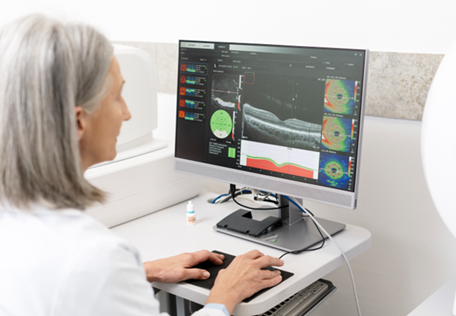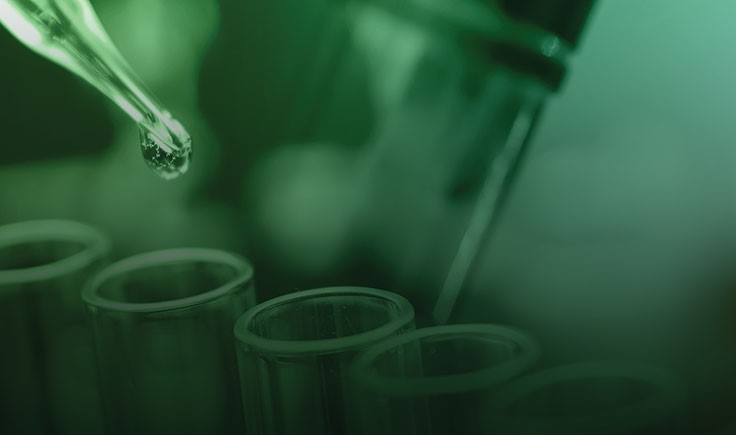Altasciences’ Ophthalmic Expertise: A Conversation with Dr. Simone Iwabe, DVM, PhD, DACVO and Randy Wheeland, BS

As a leading partner in ocular therapy, Altasciences has been at the forefront of ophthalmic drug development for over 30 years, having completed more than 100 ocular studies to assess the safety of new drug products intended for human use.
We spoke to Dr. Simone Iwabe, DVM, Director of Veterinary Services at Altasciences, and Randy Wheeland, BS, Pathology Associate III, to explain what sets Altasciences’ early-phase ophthalmic solutions apart from our competitors. Here’s what they had to say:
What specialized ophthalmic expertise does Altasciences offer for early-phase preclinical ocular studies?
According to Dr. Iwabe, the key to Altasciences’ success is the seamless integration of its specialized teams.
“All our teams are connected. Any study director has the expertise needed to conduct any ocular study. We have two dedicated ophthalmology technicians trained to perform all ocular procedures, including topical dosing, capturing images using a fundus camera, optical coherence tomography (OCT), confocal microscopy, and electroretinography to measure retinal activity. Whether conducting tonometry or measuring corneal thickness, any of our technicians can carry out these tasks with precision.”
Additionally, Dr. Iwabe highlights the importance of Altasciences’ necropsy team, which consists of experts skilled in collecting and analyzing eye tissues. “We can analyze the entire eye as a single block or dissect it into various portions, something not all CROs can do. At Altasciences, our teams specialize in this type of tissue collection, which is vital for comprehensive ocular studies.”

Randy Wheeland further elaborates on the specialized necropsy work. “In necropsy, we remove the eye for dissection and can separate the retina from the choroid, which is uncommon in many facilities. We can freeze these tissues in liquid nitrogen for further study. We tailor our approach based on the sponsor's needs, focusing on specific areas related to the test article.
For example, if a sponsor is interested in understanding how the test article affects the meniscus tissue, we can isolate and process that tissue for in-depth analysis and identify any irregularities.”
What advanced instruments does Altasciences utilize to conduct these ocular studies?
Altasciences is committed to using cutting-edge technology to support its ocular research. Dr. Iwabe details some of the advanced instruments utilized in their studies:
“We use two fundus cameras to capture color images of the back of the eye and take photographs before, during, and after the study. This is especially useful for monitoring intravitreal injections, whether suspensions or inserts, as these images help track the test article’s progression over time.”
Dr. Iwabe also highlights the Heidelberg Spectralis HRA/OCT, an essential tool for observing retinal health throughout the study. "The Spectralis provides high-resolution black-and-white images of the fundus. We can place a green line on the machine to mark the OCT area, which gives us an in vivo cross-section of the retina, ensuring it remains normal throughout the study."
"We have recently expanded our ocular capabilities, incorporating confocal microscopy to analyze changes in the cornea and pupillometry to evaluate changes in the pupil response. These advancements allow us to offer even more comprehensive analyses of ocular health and test article impact," Dr. Iwabe adds.

What ocular procedures can Altasciences perform in early-phase preclinical studies?
Altasciences’ range of procedures spans from minor interventions to highly complex surgeries, enabling them to conduct both routine and cutting-edge studies.
“We’re fully equipped to perform a variety of ocular procedures, such as subretinal, intravitreal (IVT), suprachoroidal, sub-tenon, intracameral, intralacrimal, and subconjunctival injections," says Dr. Iwabe. "Additionally, we have the capability to perform invasive anterior and posterior segment surgeries using microscopes and a Stellaris machine. This allows us to conduct cataract surgeries, vitrectomies, or semi-automated sub-retinal injections."
“We can develop ocular animal models to be used in efficacy studies and are fully prepared to accommodate any additional requirements from the sponsor,” Dr. Iwabe states.
From comprehensive ocular assessments to complex surgical interventions, Altasciences is equipped to handle the full spectrum of ophthalmic research needs.
If you’re ready to discuss your ophthalmic study requirements or explore opportunities for preclinical drug development in your pipeline, don’t hesitate to contact us. Our team is here to support you.
Learn more about our comprehensive ophthalmic drug development services!
Altasciences is a forward-thinking drug development solutions company providing pharmaceutical and biotechnology companies with a flexible approach to preclinical and clinical pharmacology studies. Our integrated services include formulation, manufacturing, analytical testing, preclinical safety, clinical pharmacology, bioanalysis, program management, medical writing, biostatistics, clinical monitoring, and data management—customized to meet your specific needs.
This article was posted in April 2025



